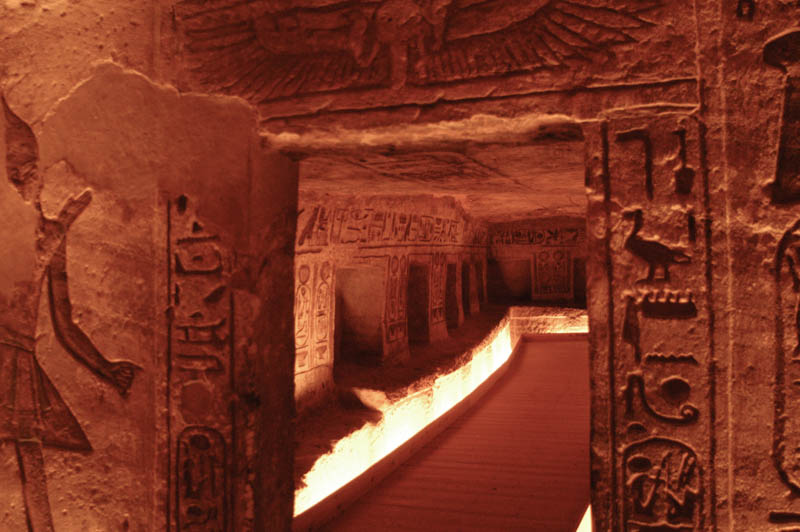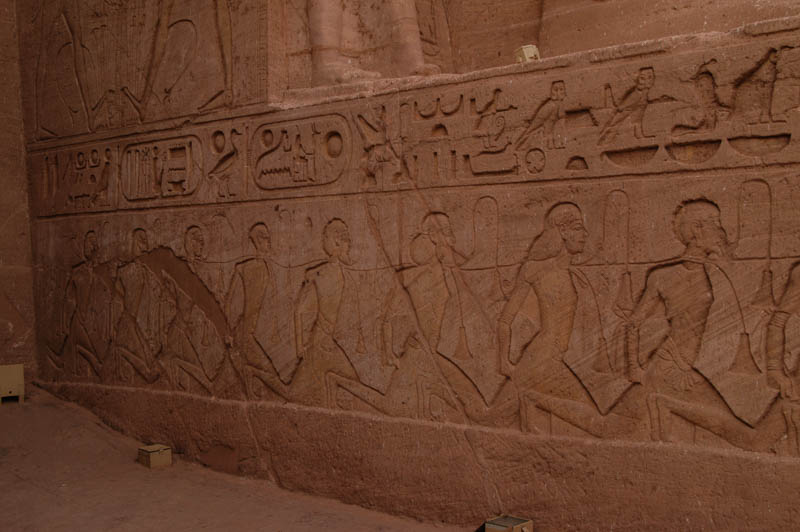
Still pretty much alone, we were able to enjoy the interior of the temple without much interruption I almost with that this had been the first place we visited — I can’t think of a better introduction to the enormous examples of monumental art from Ancient Egypt. Admittedly, Ramesses II was a bit too enamored of his own importance, and his monuments dot Egypt with the regularity of modern Coca-Cola billboards (several of our guides refer to him as “The Coca Cola Pharaoh” for the ubiquitous nature of Ramesses II’s statuary and temples.
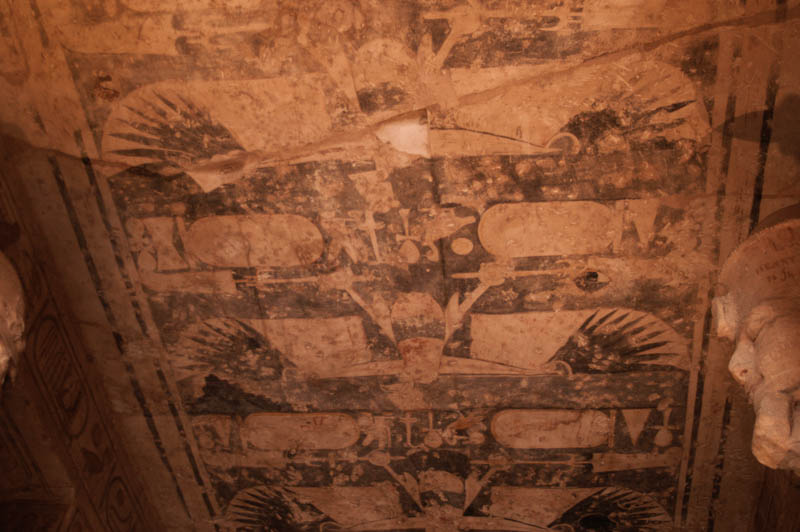
Entering the temple itself leads to a hypostyle hall (a pillared hall) that has even more statue of the illustrious pharaoh — eight of them, standing with their arms crossed and holding a crook and flail (a style called “Osirid”) and a still -brilliantly colored ceiling covered with vultures and stars. THe statues are 10 meters tall and line the hall to the entrance. The ones on the north wear the double crown, while those on the south only the crown of Upper Egypt.
We had to take pictures inside without flash, so we took them at very high speed. While most of the interior is dimly lit with electric lighting, it’s hard to get clear pictures. If I haven’t mentioned that our digital camera rocks, it does!
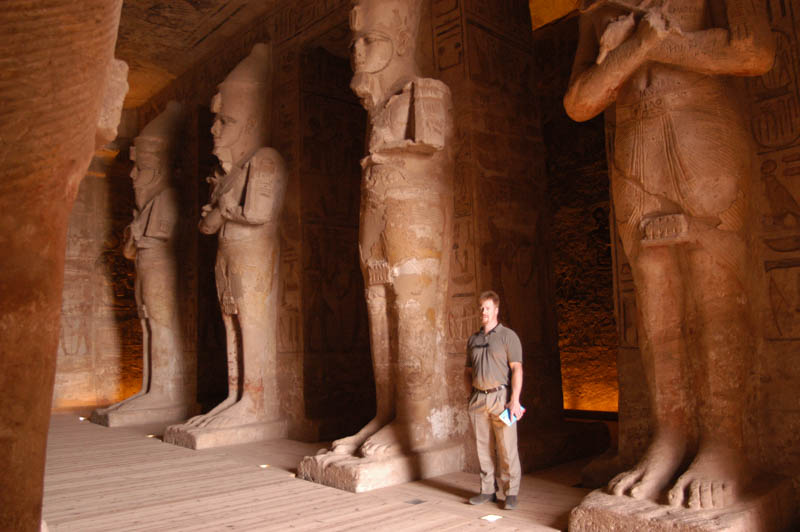
Surrounding the hall are dozen so carvings depicting Ramesses making offerings to the gods (and to himself, oddly enough) and representations of the Battle of Kadesh ( about 1275 BCE), in which Ramesses defeated the Hittites. The carvings show a victorious pharaoh, but the truth of the matter is that the battle was not so successful and while Ramesses is shown in his chariot spearing and beheading his enemies, there is little evidence that it happened that way — isn’t that always the truth of it? The victor gets to write the history. The army marched on Kadesh, but the HIttite army forded the river and scattered the Egyptian troops. According to the history, Ramesses single-handedly escaped from the trap and stormed the fortress. In reality, he never took the city
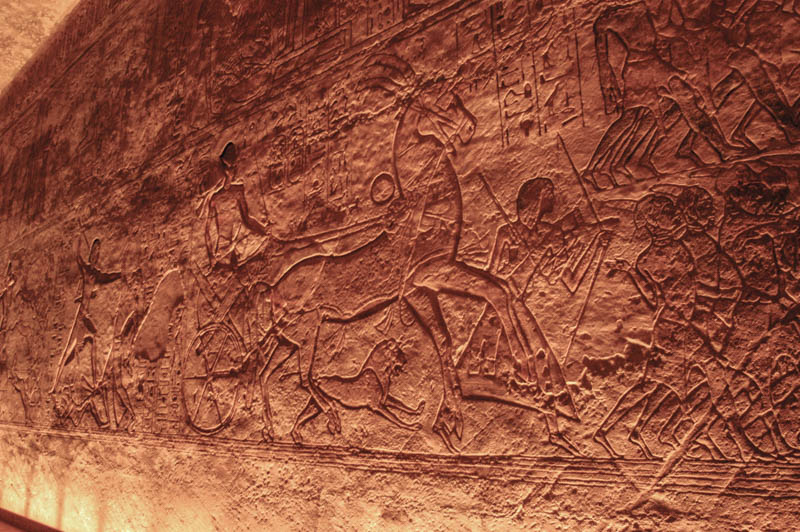
Scenes of the army marching, and the victorious pharaoh presented the severed heads of his enemies to the gods. One of the more interesting reliefs here shows a strange, multi-armed Ramesses smiting A Libyan (smiting is a common theme here) that may be a representation of motion…perhaps the first example of “animation” in history.
There are eight narrow chambers that lead off from the hall. They were probably storerooms and offering-rooms. The entire temple is amazingly symmetrical, except for the extra two rooms on the north side, as if they decided later that they needed more storage. The walls in these chambers are also carved, with formulaic offering carvings to the gods
